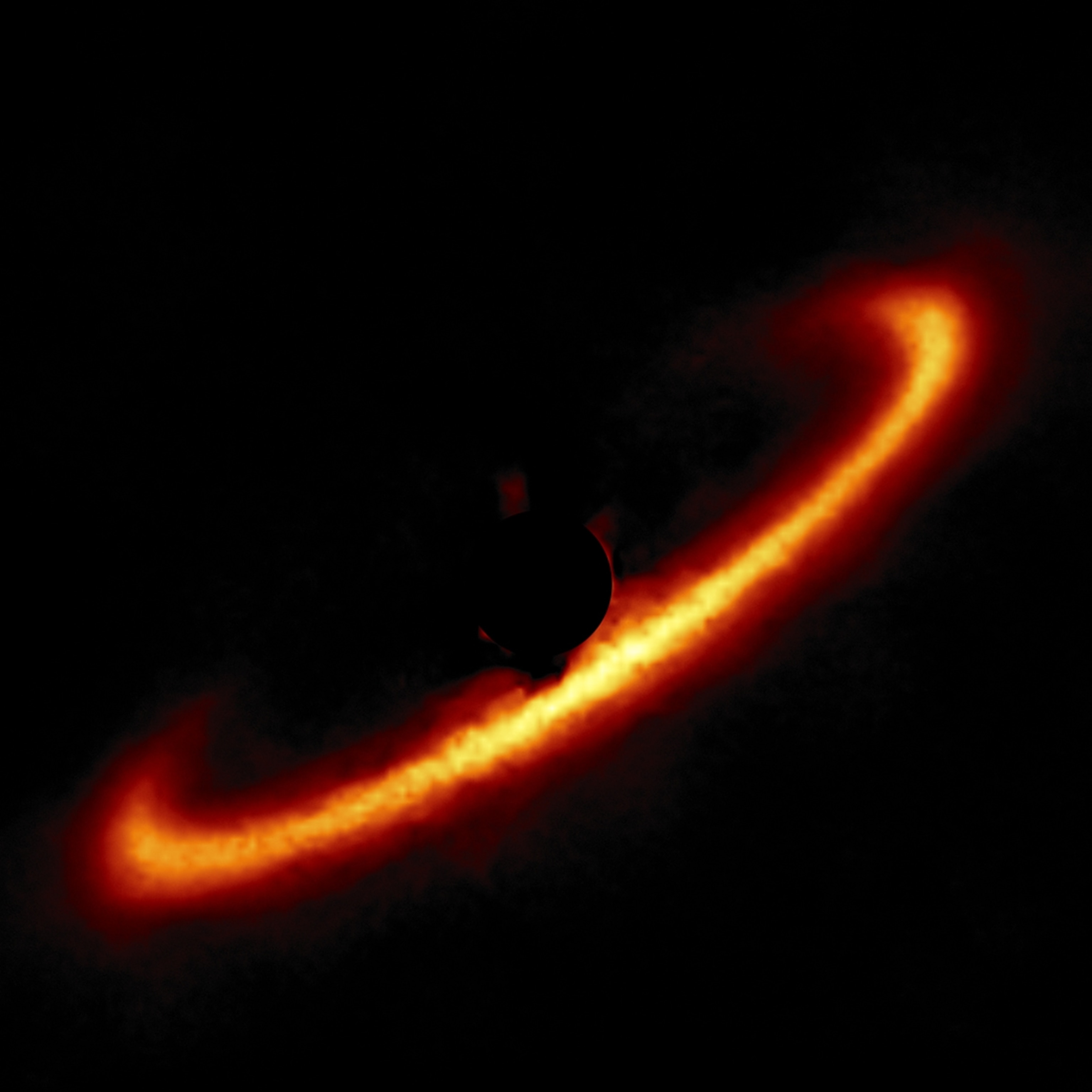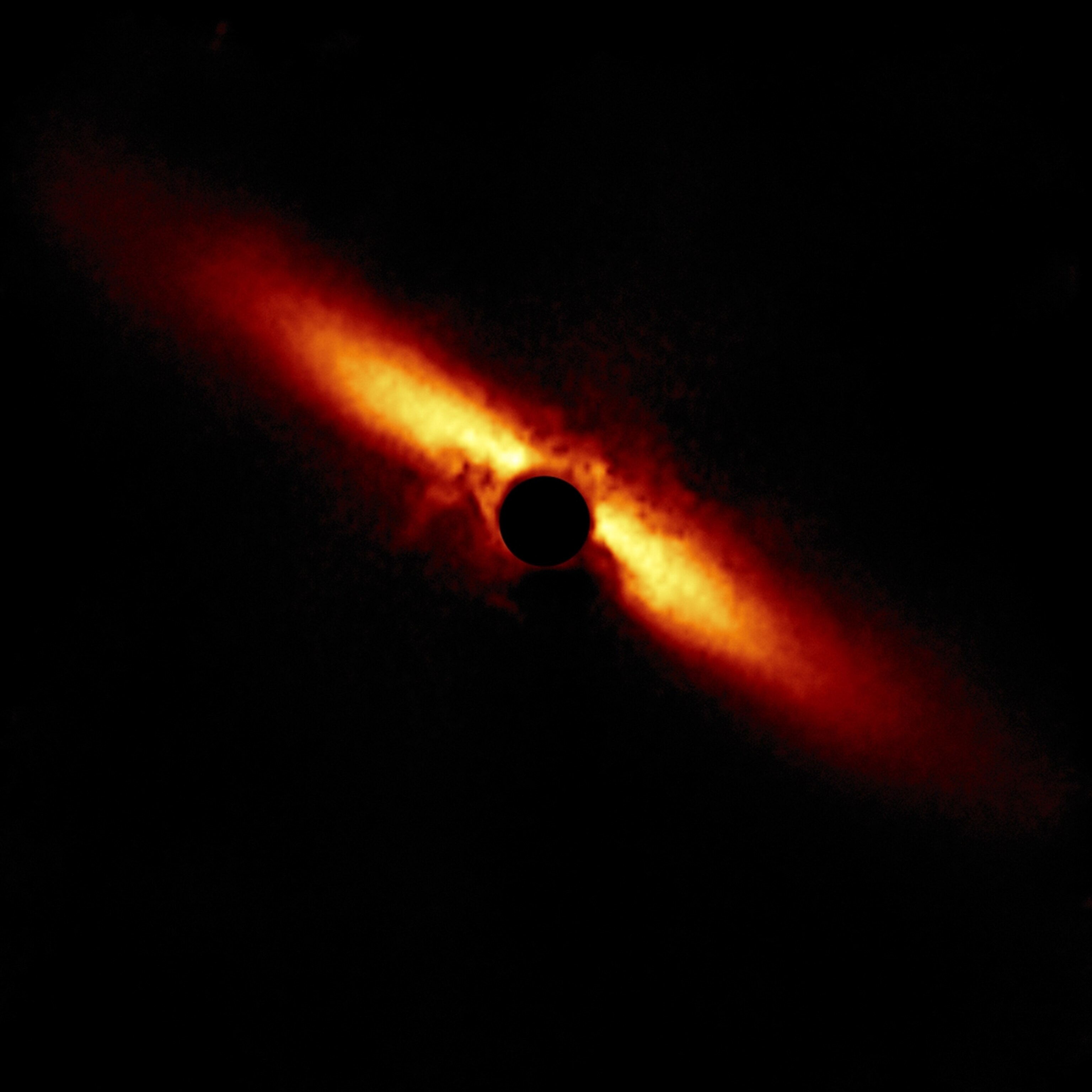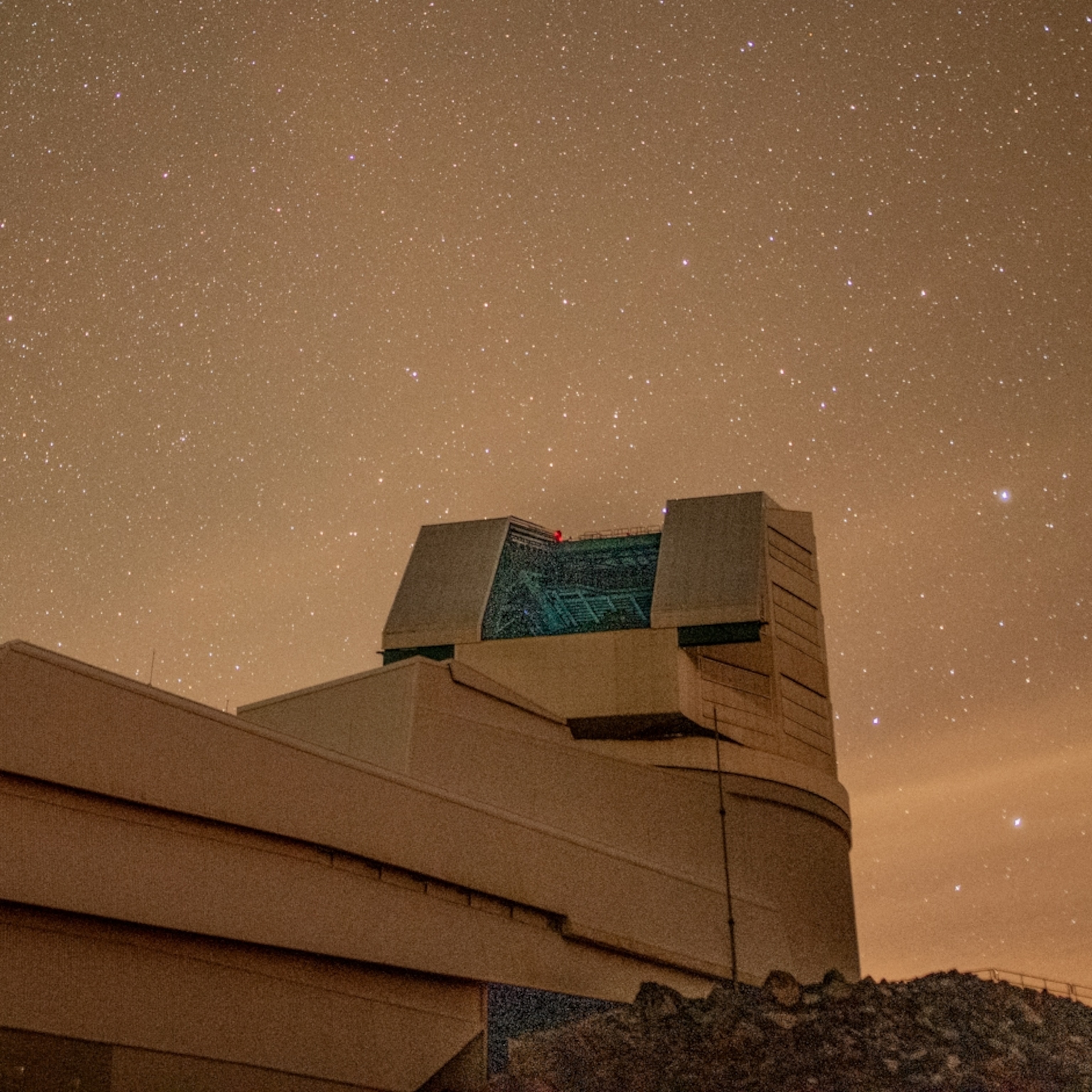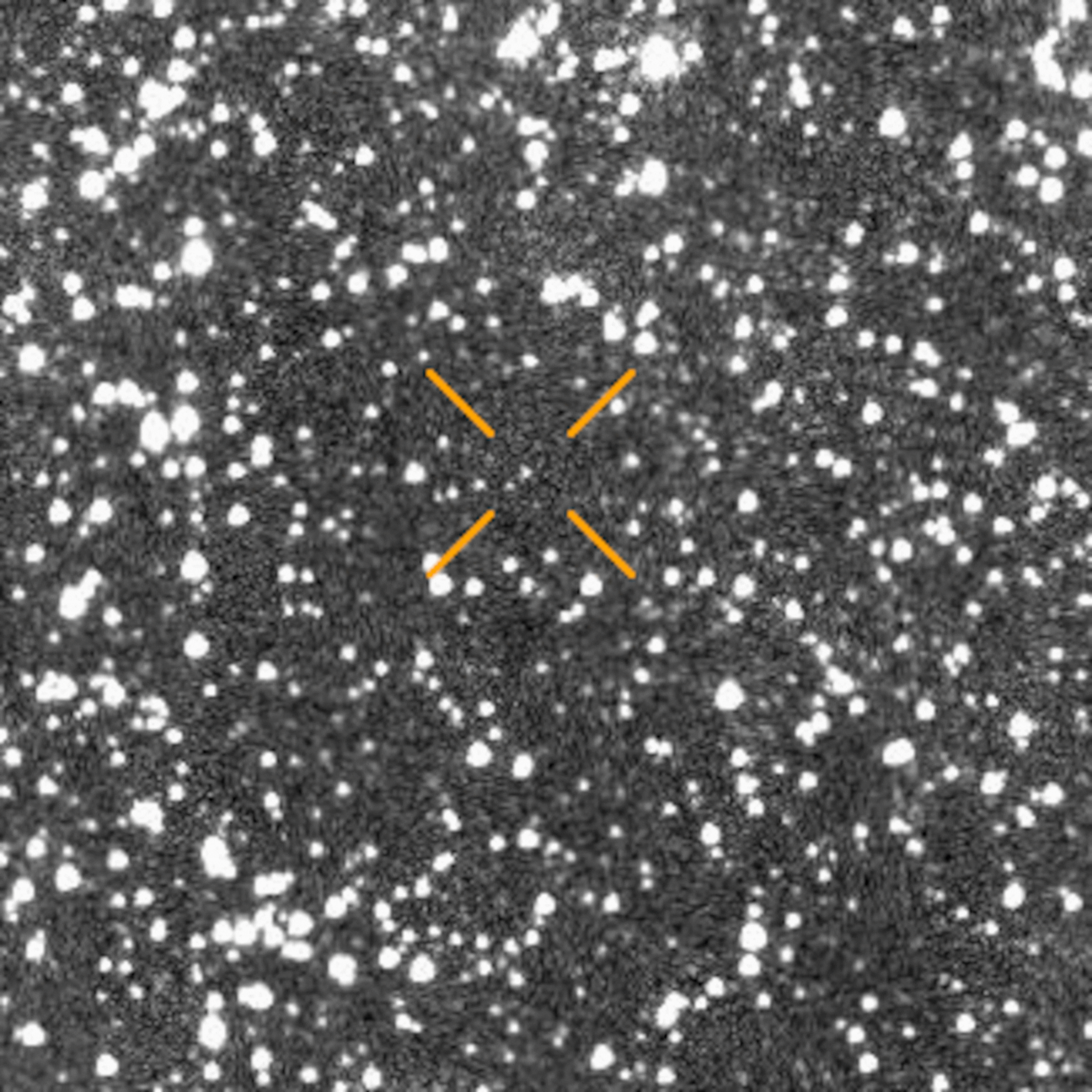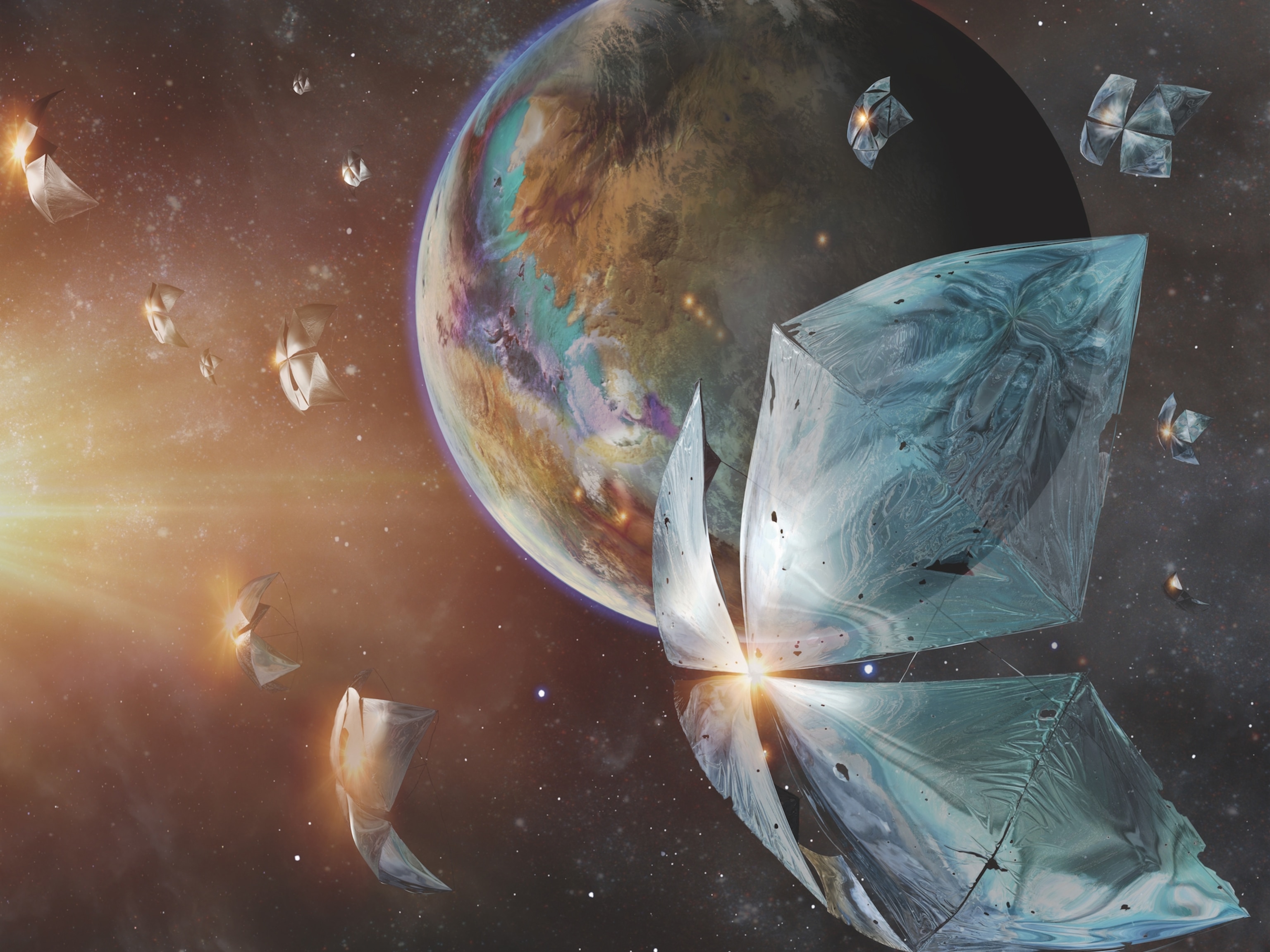
The ‘small wonders’ unlocking secrets of the solar system
Modern astronomy is giving us unprecedented views of the asteroids, comets, and other small bodies that litter our cosmic home. These planetary leftovers offer clues to our creation—and potential destruction.
Hear more about how scientists are using the universe's small objects to answer its big questions on our podcast, Overheard at National Geographic.
Dante Lauretta is serene as he prepares for the 17 seconds he’s worked toward for the past 16 years.
Lauretta, a University of Arizona planetary scientist, is transfixed by a monitor showing three simulated views of a rubbly, top-shaped object floating in a sea of stars. That’s the asteroid known as 101955 Bennu. He’s watching it while perched on an upholstered metal stool inside an unassuming building in Littleton, Colorado. With its cinder-block hallways, pop-out ceiling panels, and the occasional wasp problem, the building could be mistaken for a run-of-the-mill office suite. But the spacecraft decals on the walls and the labels above each cubicle—Electrical Power; Telecom; Guidance, Navigation & Control—reveal its true function: mission control at Lockheed Martin Space.
It’s 1:49 p.m. mountain time on October 20, 2020, and the screen shows Bennu sitting within a green hoop that represents the orbit of a NASA spacecraft with a mouthful of a name: the Origins, Spectral Interpretation, Resource Identification, and Security-Regolith Explorer—OSIRIS-REx for short. In less than three hours, this robotic emissary will attempt to descend and touch Bennu for the first time, hopefully trapping a sample of extraterrestrial dust and pebbles for return to Earth. (How did NASA land on and grab stuff from an astroid?)

Launched in 2016, OSIRIS-REx had to orbit the sun twice to catch up with Bennu, which is more than 200 million miles away on this fateful October day. At roughly a third of a mile wide, Bennu is the smallest celestial body a spacecraft has ever orbited. Its surface is so rugged, Lauretta’s team spent a year mapping it to find a safe place to descend. All this buildup should make today’s main event a tense moment, but at this late stage of the billion-dollar mission, Lauretta seems at peace.
“The spacecraft is in a really good mood today,” he tells me.
Why go through all this stress and effort for a few pounds of dust and rubble? For starters, the asteroid’s building blocks formed during the solar system’s earliest days, more than 4.5 billion years ago. These rocks, which show hints they contain carbon, represent a pristine archive of how the planets formed and perhaps where Earth got the starter materials for life. “Scientifically, it’s literally pay dirt,” Lauretta says.
But just as Bennu carries the stuff of creation, it also has the power to destroy. Bennu comes close enough to Earth that astronomers believe there is a small but serious chance—one in 2,700—that it could collide with us between 2175 and 2199. The samples OSIRIS-REx brings back could be key to designing the right defense against an impact that could release more than two million times the energy of the ammonium nitrate blast that rocked Beirut a year ago—enough to devastate a state or province, possibly even a continent.
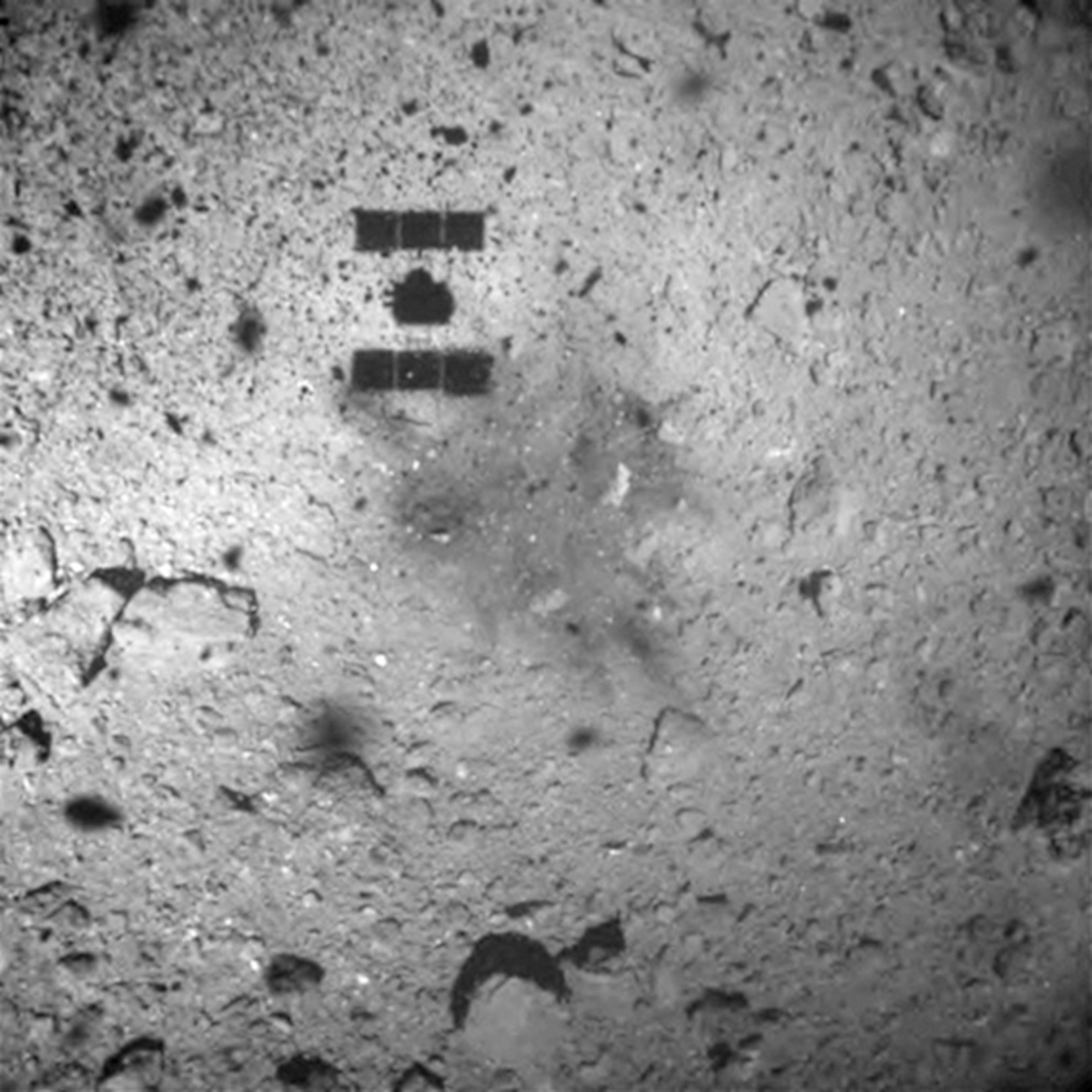
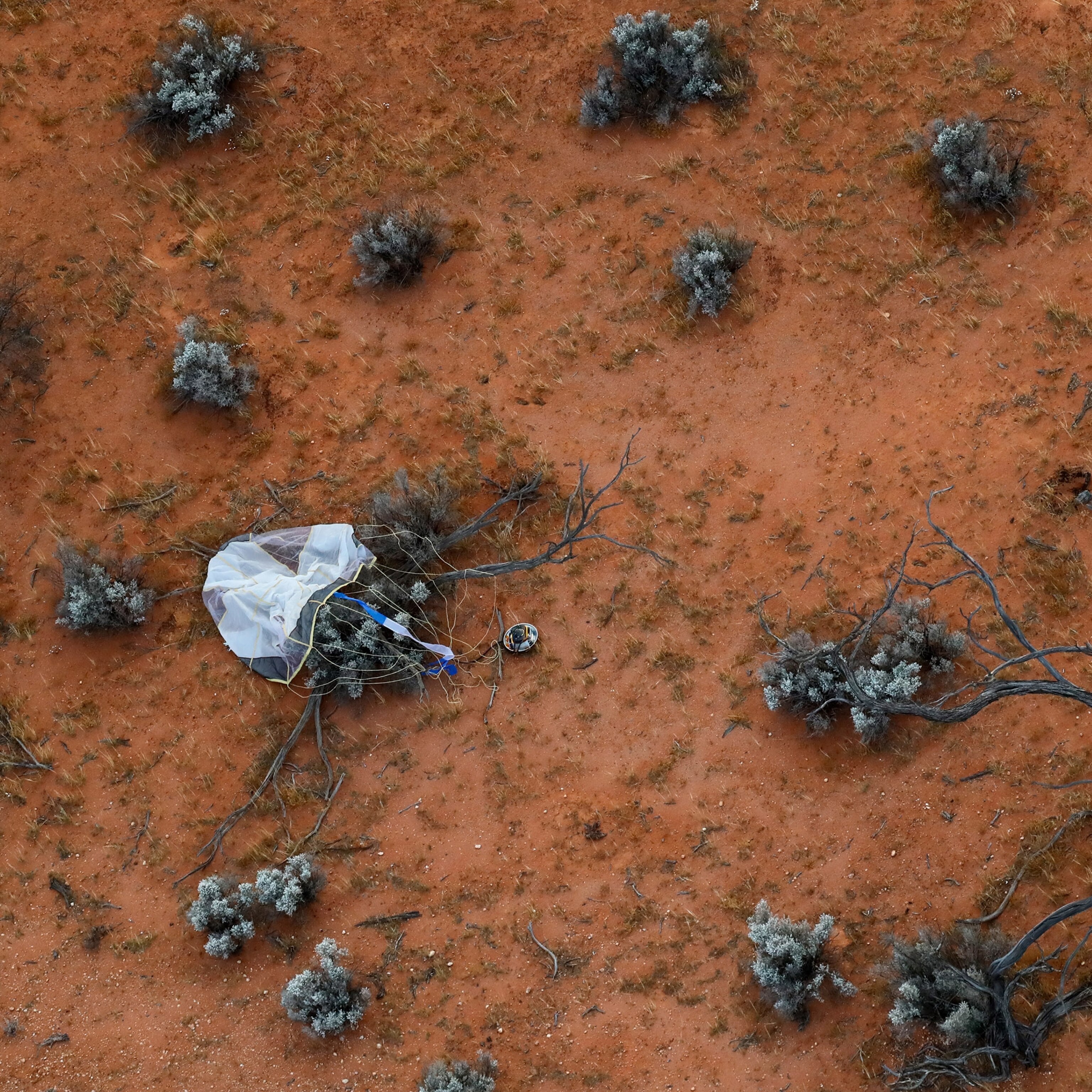
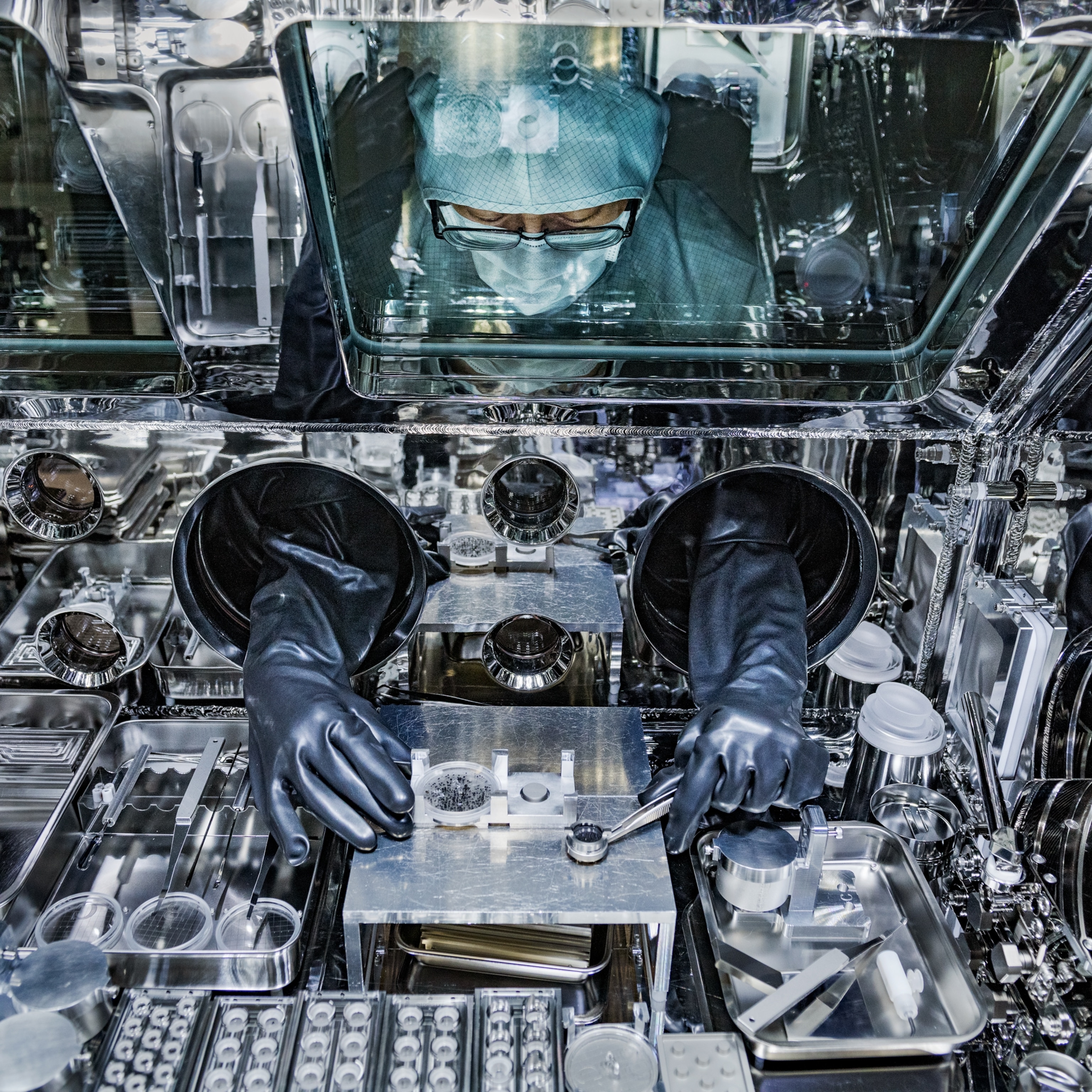
On a grander scale, Bennu and OSIRIS-REx symbolize two parallel revolutions in modern astronomy that are upending old conceptions of the solar system. Today’s telescopes can see more small, faint objects than ever before, allowing astronomers to survey the skies and fill in the cosmic population that surrounds the eight planets. Twenty years ago, humans knew of roughly a hundred thousand celestial bodies in the solar system. By early 2021, we’d cataloged slightly more than a million objects orbiting the sun. (Find out more about the historic OSIRIS-REx mission.)
At the same time, space agencies around the world have developed the tools and technologies to visit and explore these worlds—and even bring pieces of them back to Earth for closer study.
The stakes are far from abstract.
The picture of the solar system we all learned in school seems to have a logical architecture. But astronomers and planetary scientists have suspected for decades that something was amiss, since by the looks of it, it’s extremely difficult to explain how Uranus and Neptune could have formed where they orbit today. Our cosmic home appears to be missing some of the most common types of planets that orbit alien stars. And as of 2021, Earth is the only known harbor for life.
So how, exactly, did our solar system end up here—and give rise to its inhabitants?
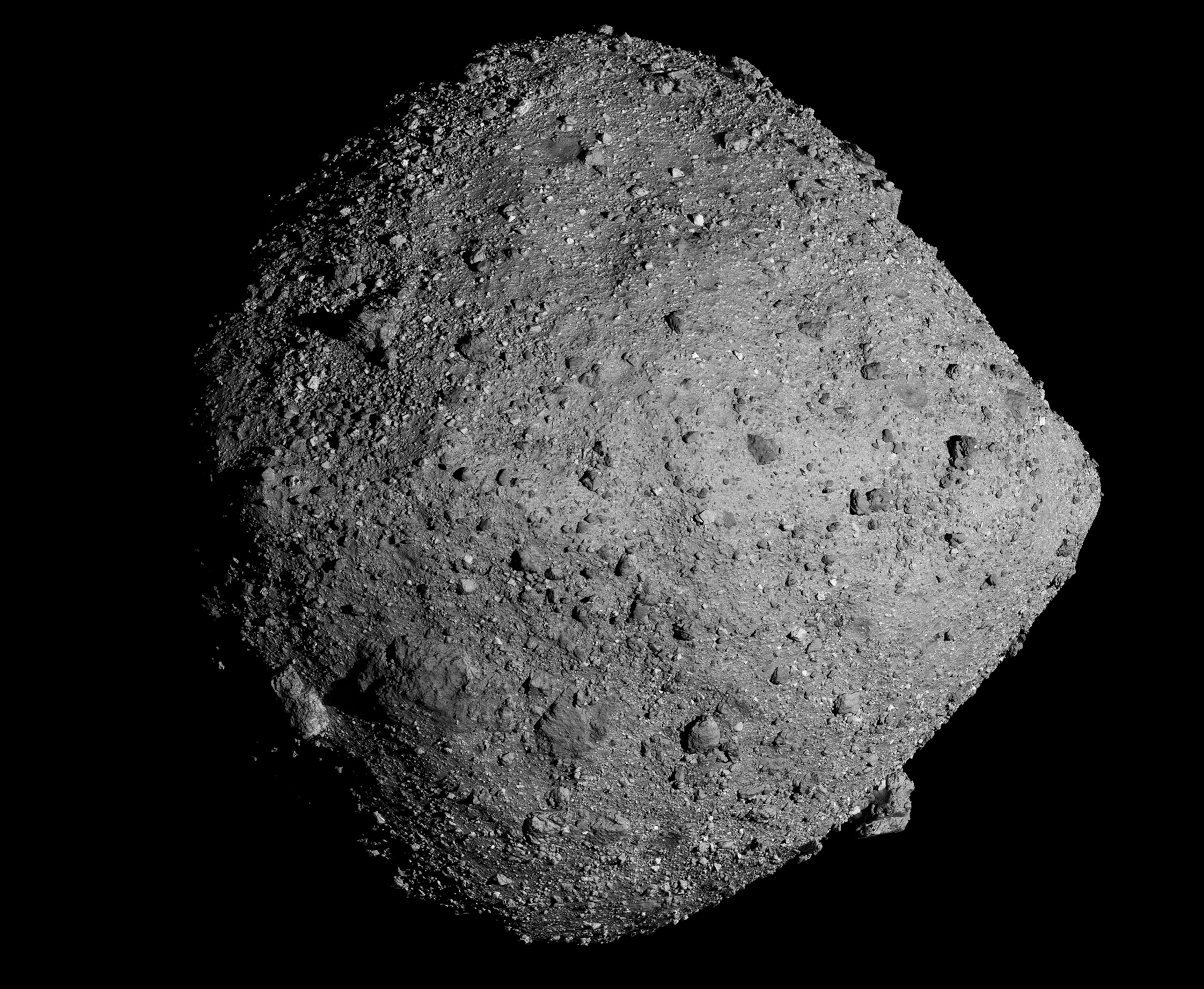

Small bodies such as Bennu were long dismissed as mere leftovers in the process that created the planets. But now researchers know how important these bodies are in the search to answer such massive questions. Like Bennu, many are time capsules, essentially unchanged since the birth of our sun. Others could similarly pose a threat to life on Earth. By tracking, visiting, and sampling these primordial worlds, we’re finally getting a chance to see where we came from—and to hopefully stop these objects from destroying who we’ve become. (Tumbling, leftover rubble reveals the chaotic birth of our solar system)
Humankind's interest in small bodies—astronomer-speak for every natural object orbiting the sun that isn’t a planet, dwarf planet, or moon—has been with us as long as there have been people looking up. For millennia, cultures around the world have spotted the comets and meteors visible in the night sky and treated them as important omens. There was only so much people could do to learn more, though, because small bodies reflect very little sunlight and therefore are hard to find in the blackness of space.
By the dawn of the 20th century, astronomers had found roughly 500 asteroids orbiting the sun, starting with the 1801 discovery of Ceres. The pace of discovery really began to crank up in the 1980s and ’90s as telescopes improved. In 1992 astronomers spotted the first world—aside from Pluto and one of its moons—that is beyond Neptune’s orbit, confirming theories of the solar system’s outer zone now called the Kuiper belt. Today astronomers know this far-flung region is filled with thousands—perhaps hundreds of thousands—of icy bodies.
Planet Nursery
But if you had to pinpoint when the small-body frenzy began, a reasonable choice would be March 11, 1998. That’s when the U.S.-based Minor Planet Center, the world’s official repository of all asteroid and comet orbits, issued an ominous-sounding press release: An asteroid discovered the previous December would come within 26,000 miles of Earth’s surface in 2028, with a small chance it would hit the planet.
The story quickly made headlines around the world, and the news hit a public increasingly aware of how much damage an asteroid could deal. A few years earlier, geologists had identified the crater left by the asteroid that struck Earth 66 million years ago, killing off all the dinosaurs except birds. Was the incoming space rock the next Big One?
Astronomers raced to double-check their calculations. By the next day, Don Yeomans and Paul Chodas with NASA’s Jet Propulsion Laboratory had figured out that the asteroid would sail harmlessly by Earth at a distance of 600,000 miles. Whew—crisis averted. Still, the back-and-forth cast a glaring spotlight on how little support there had been for finding killer asteroids.
By coincidence, the Hollywood blockbusters Deep Impact and Armageddon premiered just months after the affair, reinforcing asteroid impacts as the apocalypse du jour. In May 1998 Congress told NASA to find at least 90 percent of all asteroids at least six-tenths of a mile wide that come within 121 million miles of the sun, and to do it within a decade. By July NASA had designated an office to oversee the asteroid search.
Astronomers didn’t just have political will on their side. They also had the right technology. By the late 1990s digital camera sensors had gotten big and sensitive enough to outperform the cumbersome glass plates used for decades to take pictures of the night sky. Telescopes suddenly could see smaller, fainter, and more distant objects. And because the new data arrived digitized, researchers could analyze them with computer software, simplifying the process.
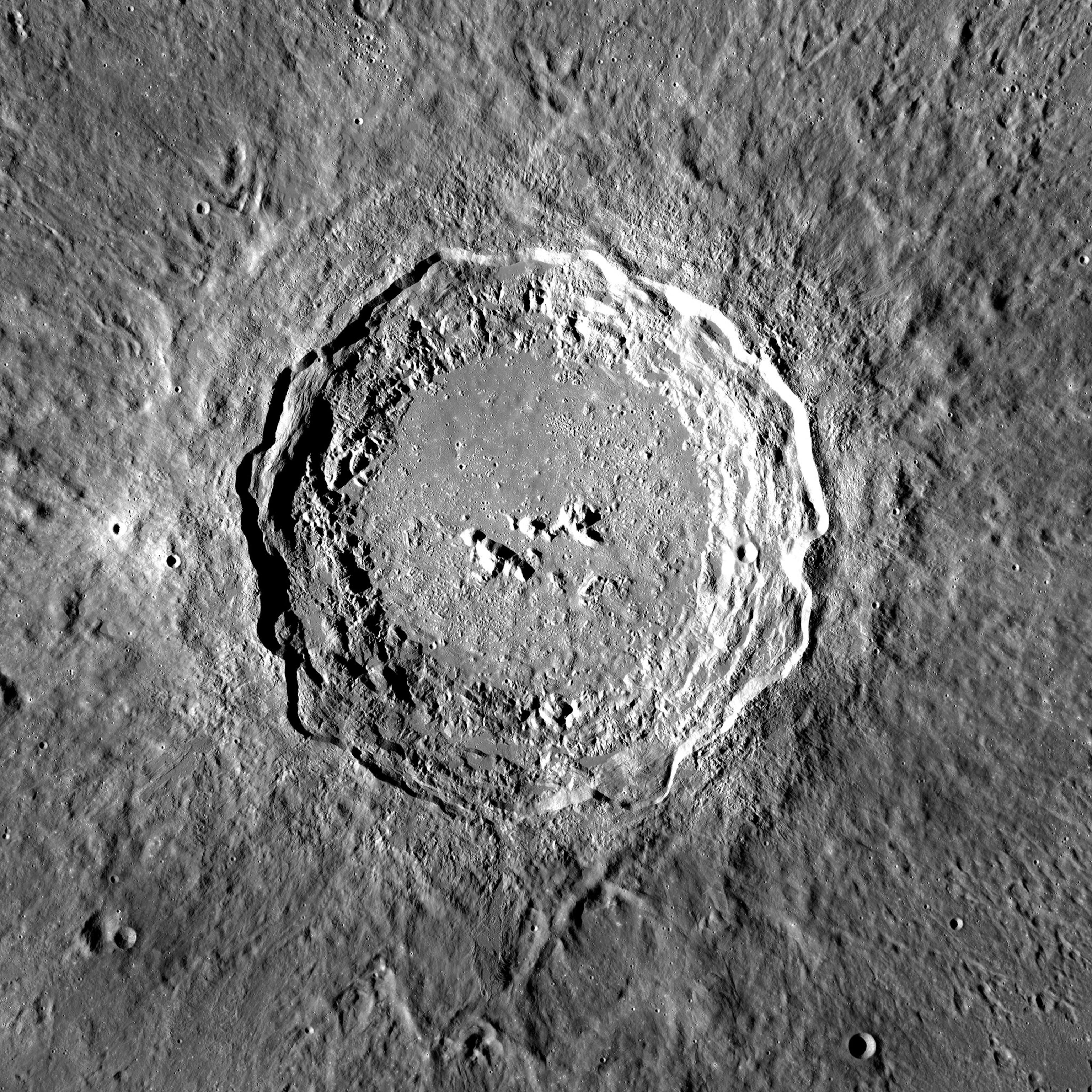
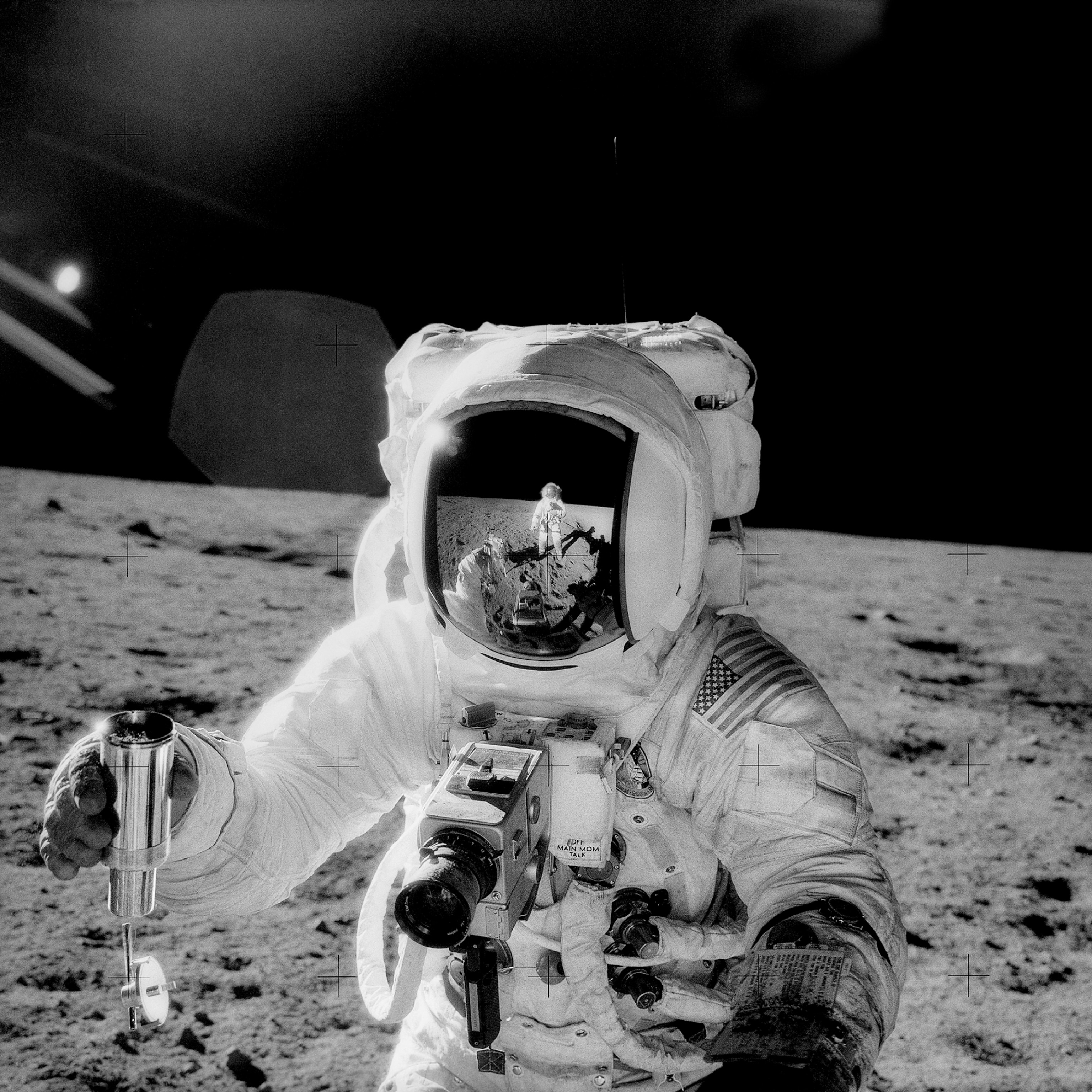
Mike Brown, an astronomer at California Institute of Technology in Pasadena, saw firsthand what followed. In 2002 Brown and his colleagues decided to upgrade the 48-inch-wide telescope at California’s Palomar Observatory with a large digital camera. When Brown aimed the instrument toward the Kuiper belt in hope of finding objects bigger and brighter than the region’s few hundred known denizens, his team started discovering so many new worlds, “I just felt like things were falling out of the sky,” he says.
Brown’s discoveries included three objects that each were at least half as wide as Pluto, and one—named Eris for the Greek goddess of discord—that was more massive. So in 2006 the International Astronomical Union voted to create the “dwarf planet” category that now includes Pluto. In the 15 years since, astronomers have found even more objects beyond Neptune—and have learned just how diverse they are in their motions around the sun.
Some objects in this frigid potpourri have stable, boring orbits that imply they formed where they are today, such as the reddish object Arrokoth, which NASA’s New Horizons probe flew by in 2019. Others have been scattered into erratic orbits by Neptune’s gravity, and a rare few have such distant, elongated orbits around the sun that they probably don’t feel gravitational tugs from any of the known planets.

These “detached” small bodies are so odd, Brown and some astronomers suspect they betray the presence of an unseen planet several times more massive than Earth, lurking tens of billions of miles from the sun in the solar system’s exurbs.
But even our best telescopes can tell us only so much about what all these strange objects are made of, what they’re doing, and the role they play in the evolution of the solar system. To really begin filling in the puzzle, humans needed to bring pieces of the cosmos to Earth.
At dawn on December 6, 2020, Shogo Tachibana’s helicopter touched down in Australia’s Woomera Prohibited Area, a 47,000-square-mile span of bush-stippled outback about 300 miles north of Adelaide. Over millennia, this patch of desert has seen many uses. Six Aboriginal groups have long called these lands home. In 1947 Australia designated the region a long-range missile testing facility. And on this soggy summer morning, the site served as a landing spot for a spacecraft returning from an asteroid.
Tachibana, a scientist at the University of Tokyo, was in Woomera with his team hunting for the 16-inch-wide capsule. After a searing journey through Earth’s atmosphere, that hardware had come to rest among silvery saltbushes and wizened trees, delivering pristine dust and pebbles nearly as old as the sun itself for just the second time in human history.
Ten years prior, the Japan Aerospace Exploration Agency, or JAXA, had become the first space agency to retrieve a sample from the surface of an asteroid. The Hayabusa mission rendezvoused with the asteroid 25143 Itokawa in 2005, but the sampling maneuver didn’t go as planned. A capsule bearing only a light sprinkling of its dust grains landed in Woomera in 2010. Its successor, Hayabusa2, set off in 2014 to the near-Earth asteroid 162173 Ryugu—and did its best impression of a superhero’s bottomless utility belt once it arrived at its target.
Inside the spacecraft, engineers had packed a suite of scientific instruments, a lander, three rovers, an impactor designed to make an artificial crater, and a breakaway camera that filmed the blast while the main spacecraft moved out of range for its own safety. Those accessories aided Hayabusa2 in its ultimate goal: twice alighting on Ryugu, firing a pellet into its surface, and collecting the schmutz that sprayed outward.
Now, 5.4 grams of jarringly dark grains and pebbles are in a lab outside Tokyo, shepherded there from the Australian outback by Tachibana’s team. This is humankind’s first up-close look at Ryugu’s surface and subsurface, and upcoming studies will provide invaluable records of the solar system’s history.
Until missions such as Hayabusa2, scientists relied on meteorites that had fallen to Earth to delve into the solar system’s origins. Some of these primordial lumps indicated that the asteroids that shed them contain a surprising amount of water-bearing minerals, as well as the types of carbonaceous chemistry that can give rise to some of life’s building blocks. But even these extraordinary insights come with a catch: Meteorites aren’t completely pristine, having gotten to Earth’s surface only after surviving a fiery descent through our atmosphere. (Here's how scientists protect Earth from extraterrestrial germs)
By visiting asteroids in space and sampling them, scientists may help solve an enduring mystery: How did Earth’s surface become an oasis for life, even though the planet formed so close to the sun? As it took shape more than 4.5 billion years ago, our home world went through a scorching, hellish youth. Yet here we sit, our pale blue dot sloshing through space as a biological haven that depends on water and carbon.
Some research suggests that despite baking in the inner solar system, the infant Earth’s building blocks could have contained enough hydrogen to account for much of our planet’s water. But meteorites and impact craters across the solar system point to another, paradoxically violent source of hydration: bombardment by asteroids and comets. So far, missions sent out to small bodies have provided tantalizing hints of these ancient impacts’ boosts to Earth’s prebiotic chemistry.
The 1,500 grains of Itokawa returned by the first Hayabusa mission show that the asteroid’s minerals contain water that looks chemically similar to Earth’s. And when the European Space Agency’s Rosetta mission became the first spacecraft to orbit and land a probe on a comet, between 2014 and 2016, it revealed that up to a quarter of the comet’s mass is made up of organic molecules formed by nonliving processes. It also showed that some of the material brought to an infant Earth may have been especially fragrant: Based on its chemical profile, the comet would smell like a noxious blend of rotten eggs, formaldehyde, and a horse stable’s harsh fumes, with a dash of almond.
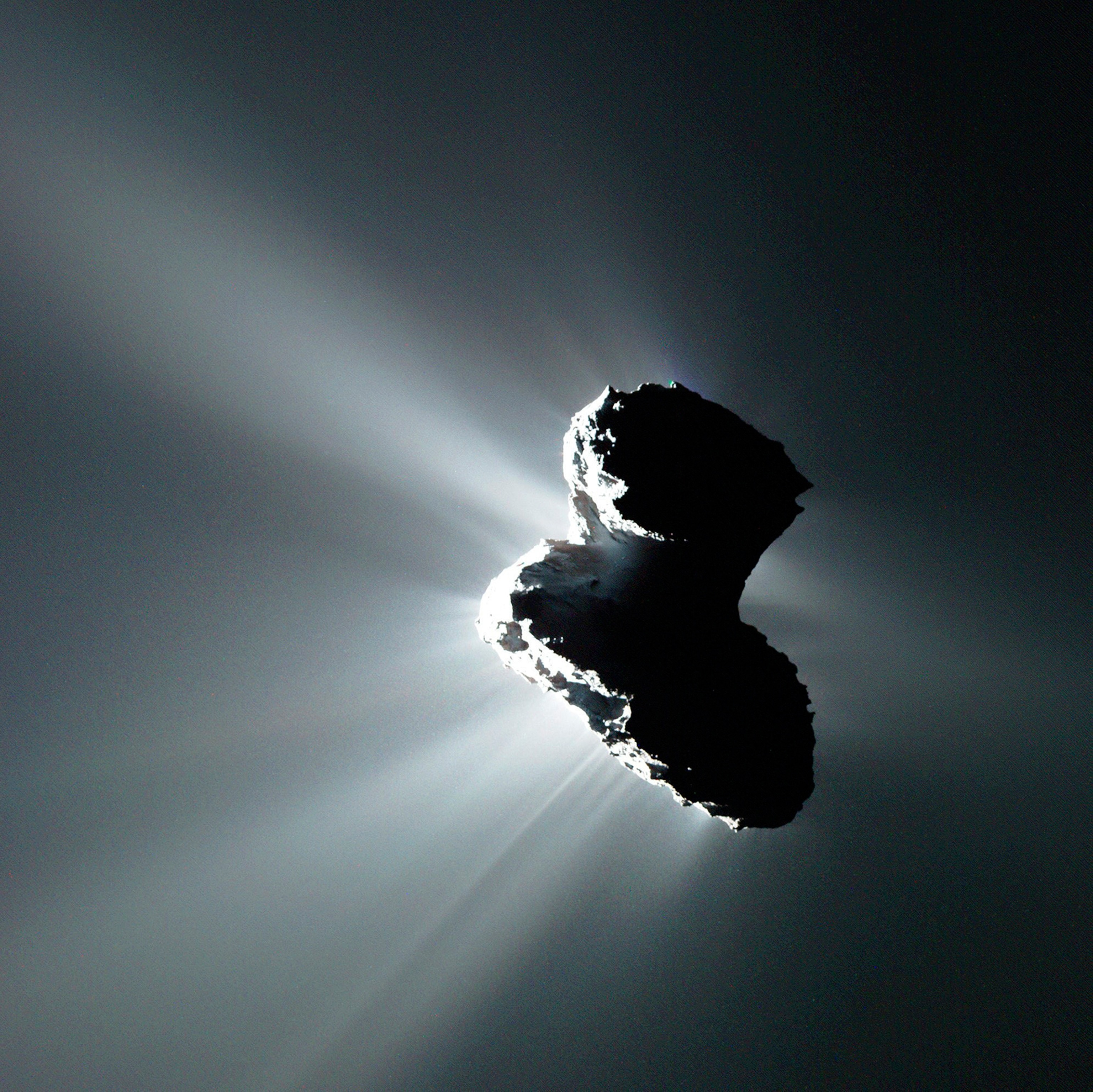
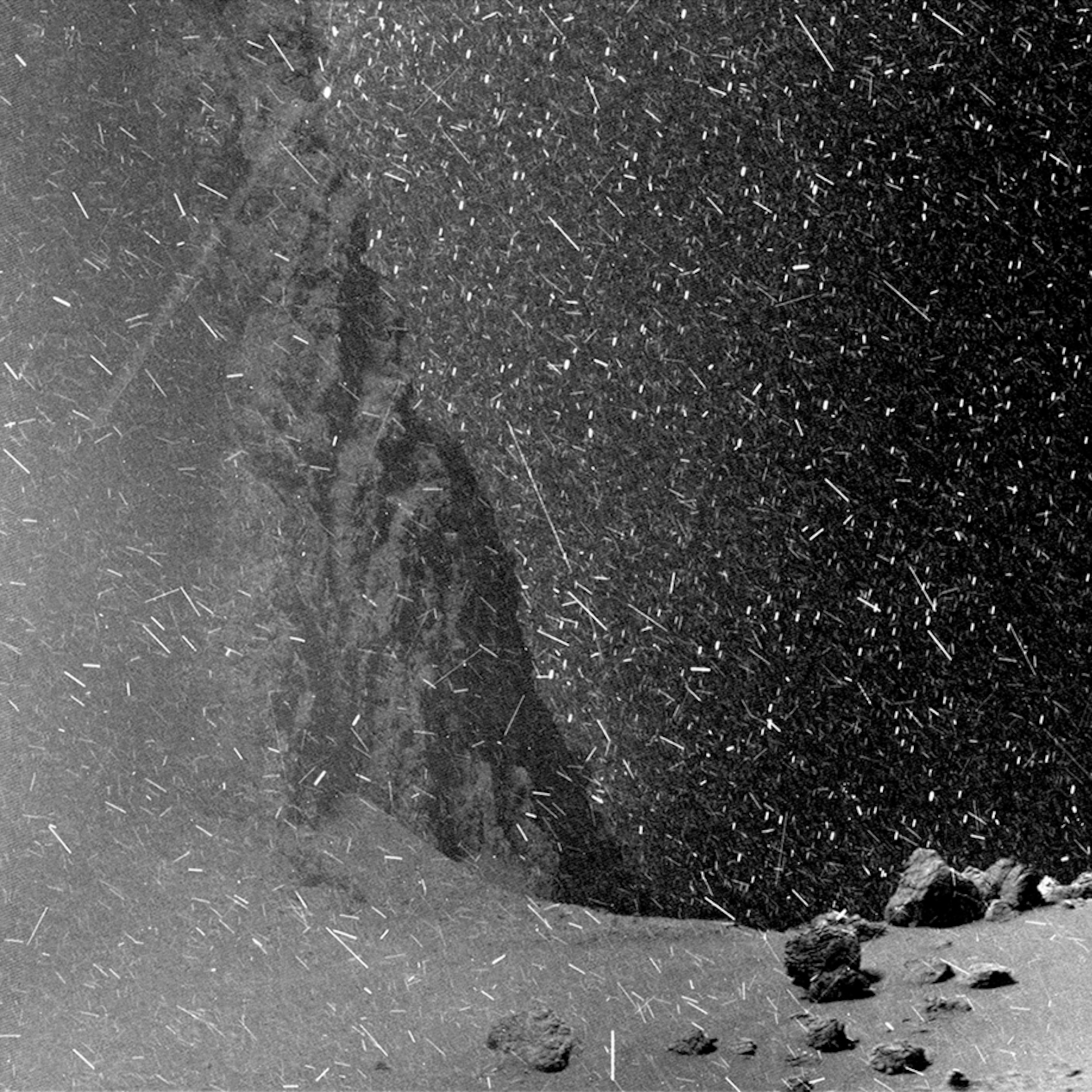
Clearly, small bodies aren’t bit players in the epic saga of Earth’s evolution—they’re central characters. But we can’t just think in terms of their utility to Earth. If anything, robotic missions have underscored that asteroids and comets are tiny worlds with terrains all their own. These objects cover such a wide range of shapes, sizes, and histories, “it’s as if we suddenly have a million new kinds of worlds to explore,” says Arizona State University planetary scientist Lindy Elkins-Tanton, who is principal investigator on a NASA mission to explore an oddly reflective, likely metallic asteroid called Psyche.
Beyond their makeup, the diverse movements of small bodies are revealing how important these worlds have been in shaping the star system we all call home.
The same Colorado building that houses OSIRIS-REx’s mission control contains the cavernous room where engineers build other NASA missions—including a robotic paleontologist of sorts that soon will trek toward Jupiter. To see this spacecraft back in October, I put on my space-day best—a face mask and a slippery, head-to-toe “bunny suit” designed to prevent my clothes and skin from contaminating anything. Then I walk into a huge, cream-colored clean room humming with ventilation. Hal Levison and Cathy Olkin, scientists at the Southwest Research Institute in Boulder, join me.
Levison and Olkin are the principal and deputy principal investigators, respectively, on the first mission to explore Jupiter’s Trojan asteroids, two swarms of primordial objects that lead and follow Jupiter in its orbit around the sun. The way Olkin and Levison see it, the Trojans are the solar system’s fossils, so Olkin suggested they name the mission Lucy, in honor of the famous skeleton of Australopithecus afarensis, a distant ancestral cousin of Homo sapiens.
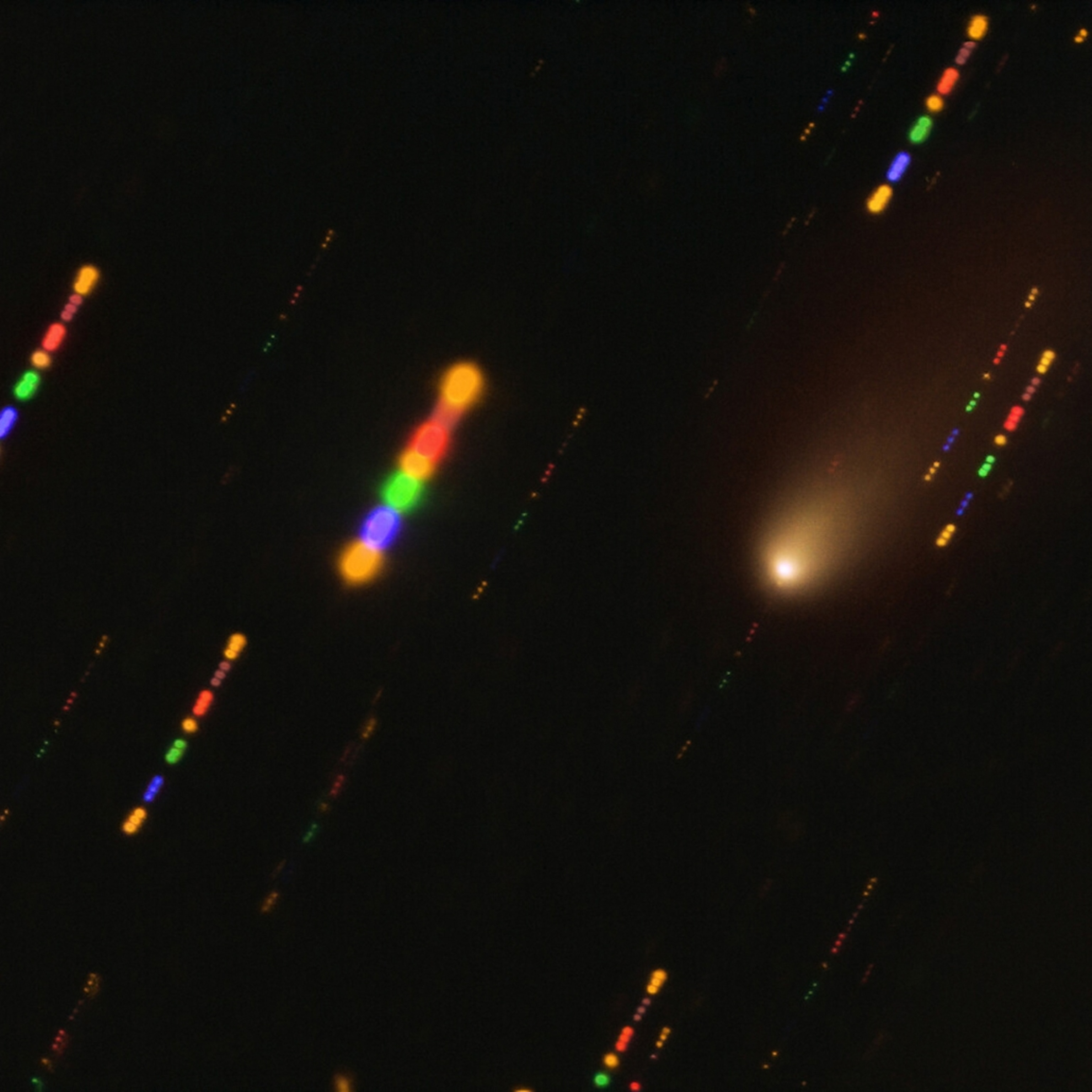
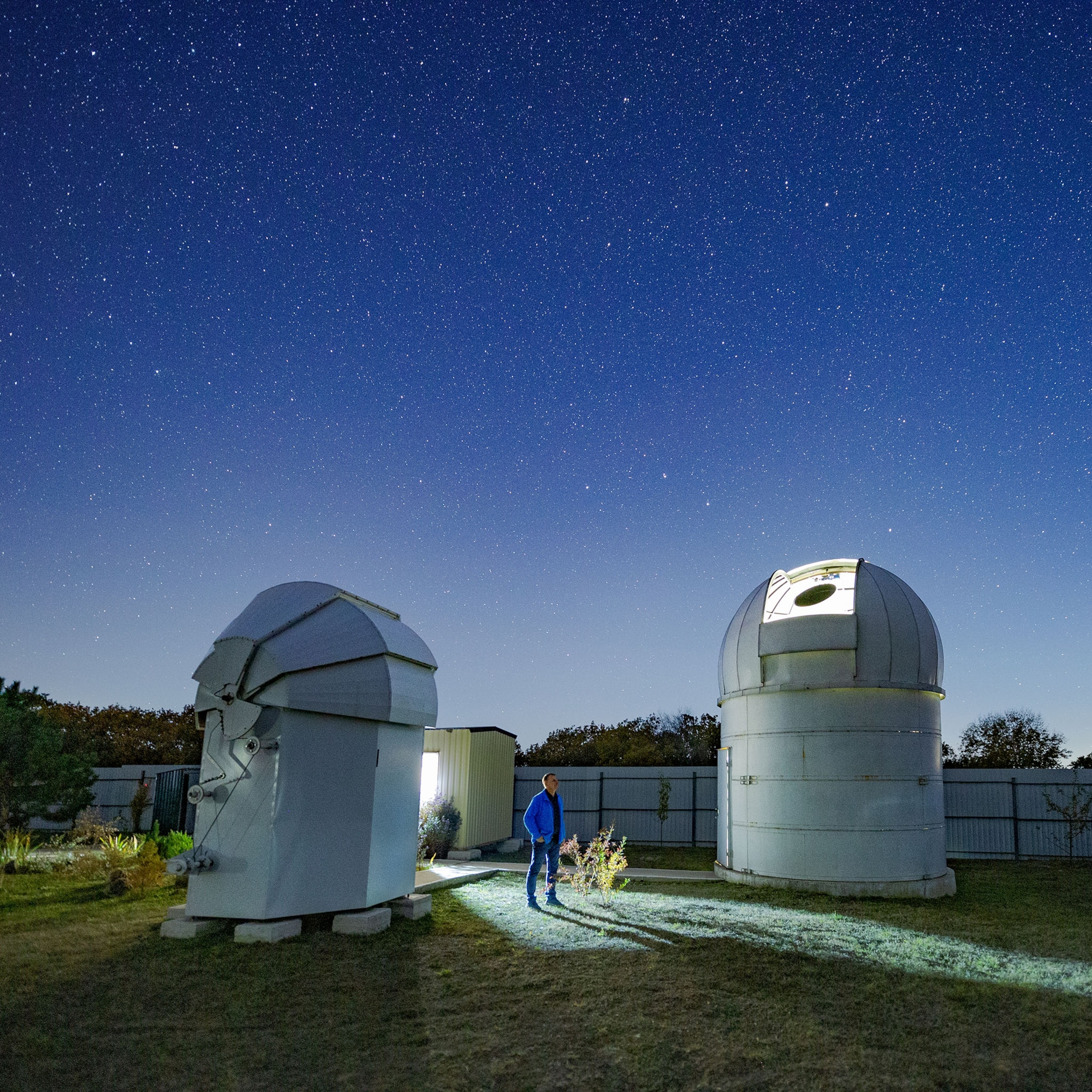
It’s not just my first up-close look at this spacecraft; it’s Levison’s too. As it happens, the engineers building Lucy are testing a key mechanism while we’re visiting. To keep the spacecraft’s gaze fixed on its targets during a planned series of high-speed flybys, Lucy’s instruments sit on a platform that, in turn, is mounted to the spacecraft’s chassis via a dual-axis gimbal, not unlike the one that stabilizes handheld cameras. The entire mission rests on that one robotic limb. If it flexes incorrectly or at the wrong time, Lucy’s instruments may collect blurred data—or at worst, stare into darkness.
We form a spaced arc around the rig, eager for the show. It moves slowly, methodically, and even this small motion delights Olkin and Levison. “It’s alive! It’s alive!” Levison jokingly exclaims. The pair’s eyes stay glued to their team’s creation as it stirs awake.
The Jupiter Trojans that Lucy will study present a dynamical riddle: They don’t appear to have formed in place, but their orbits are extremely hard to enter because they are so similar to the giant planet’s path around the sun. If today’s small bodies were to try and invade Jupiter’s turf like this, they’d most likely collide with the behemoth or get scattered by its gravity, possibly even getting kicked out of the solar system. So how did Jupiter acquire its entourage?
In 2005 Levison and his colleagues at the Côte d’Azur Observatory in Nice, France, published an influential hypothesis, now called the Nice model, which posits that the solar system began with many more small bodies than it has now, and that Jupiter, Saturn, Uranus, and Neptune formed closer to the sun than they currently orbit. As small bodies gravitationally tugged at the gas giants, the planets’ orbits shifted until they slipped into an unstable configuration.
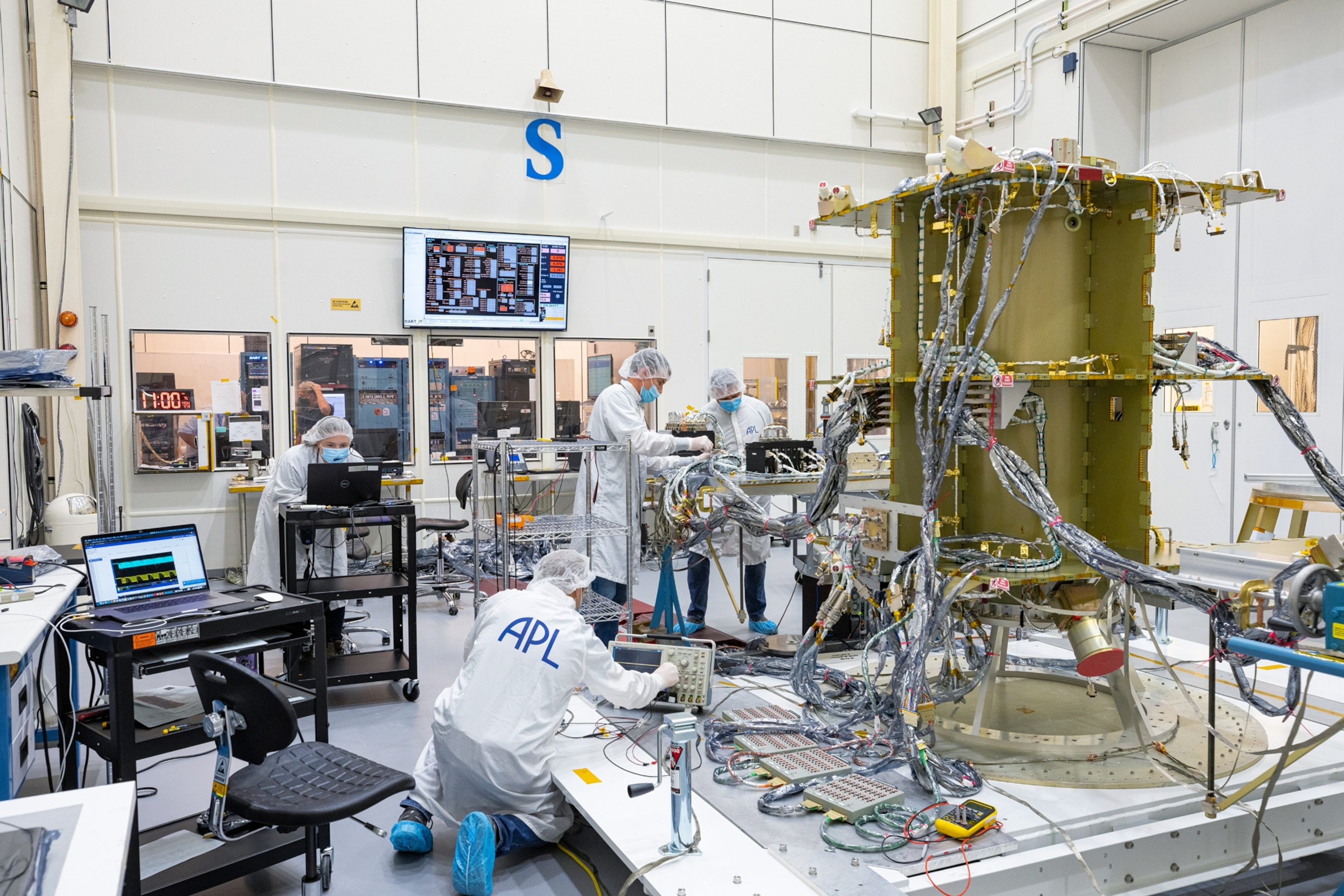
Suddenly, the planets are thought to have reeled and staggered, their orbits ballooning outward to their current positions, where Jupiter captured its Trojans. In the fray, many small bodies either scattered inward toward the sun or got ejected from the solar system. The inner planets, including Earth, may have felt the aftereffects as an increase in bombardments. “The solar system is really like somebody picked it up early on and shook it real hard,” Levison says.
After launching this October, Lucy will fly by a series of target Trojans from 2027 to 2033. The bodies’ color, composition, density, and cratering should help researchers figure out when and where each formed within the solar system, aiding similar estimates for the rest of the Jupiter Trojans. These data will throw down a gauntlet: To have a shot at being correct, future simulations of early solar system formation must replicate whatever patterns Lucy finds. Along the way, the spacecraft will snap the first resolved images of the Trojans humans have ever seen.
“This is the last stable population of minor planets that hasn’t been explored,” Olkin says. “The time is right.”
Despite all this progress, astronomers know we’re only beginning to scratch the surface of what’s out there—and what perks or perils might be lurking in the darkness.
When the Vera C. Rubin Observatory begins operations in 2023 in Chile, it will spend a decade mapping the southern night sky in stunning detail, most of it 825 times over. University of Washington astronomer Željko Ivezić, the survey’s project scientist, often likens the survey to filming “the greatest movie of all time.” Stitch all of its pictures together into a cosmic time lapse, and the resulting video could run in full-color HD for 11 months straight.
By the end of 2033, the Rubin Observatory is expected to dramatically increase the count of known small bodies. Its predicted haul includes another five million asteroids in the main belt, about 300,000 Jupiter Trojans, 40,000 objects beyond Neptune—and 10 to a hundred objects passing through our solar system that formed around alien stars, adding to the two astronomers have found since 2017.
For Michele Bannister, an astronomer at New Zealand’s University of Canterbury, the Rubin Observatory’s potential discoveries evoke awe. “We basically have been the kids on the seashore, standing there picking up a few shells and admiring how beautiful they are,” she says, “and all around us is this vast ocean spreading out—which is suddenly going to be something we can go out and explore.”
Mapping this celestial sea also is expected to find another 100,000 near-Earth asteroids that come within 121 million miles of the sun, some of which may be “potentially hazardous” like Bennu: objects wider than 500 feet, with orbits that take them within 4.7 million miles of Earth’s path around the sun. If we’ve learned anything from COVID-19, let alone the climate and extinction crises, it’s that the systems that undergird modern civilization are brittle. Now imagine throwing a big space rock at them.
“Obviously, near-Earth asteroids and comets, that’s a much less likely problem compared to something like this pandemic,” says Amy Mainzer, a University of Arizona planetary scientist who specializes in near-Earth asteroids. “But ... eventually, if you wait long enough, the unlikely events—they will happen.”
Protecting Earth from such a fate won’t require ragtag crews of nuke-toting astronauts, like in the movies. If astronomers can forecast a collision with enough notice, a zippy spacecraft could be launched in time to hit the asteroid and render its orbit harmless. In 2022 a NASA mission built and managed by the Johns Hopkins University Applied Physics Laboratory will try out this maneuver with a spacecraft called the Double Asteroid Redirection Test, or DART for short. DART will slam into a near-Earth asteroid’s tiny moonlet at about 15,000 miles an hour, shortening the moonlet’s orbit by as much as 10 minutes.
If DART proves a success, future humans may need to use a scaled-up version of this maneuver to keep Bennu in check. But first, much smaller pieces of Bennu will soar harmlessly through our atmosphere—thanks to that spacecraft being commanded from the Denver suburbs.
It’s now 4:13 p.m. mountain time on October 20, 2020, and the 17 seconds Dante Lauretta long awaited have come and gone—to his utter delight.
Two minutes earlier, he and his team received word that OSIRIS-REx was within five meters of Bennu’s surface, and that the spacecraft’s onboard hazard-detection system had given it the green light to proceed. Wearing a clear plastic mask to show more of his face under COVID-19 protocols, Lauretta breaks into a smile. Asked how he feels, he comes up with just one word: “Transcendental.”
Systems engineer Estelle Church then confirms that the commands she sent have been executed. Millions of miles from Earth, dodging boulders bigger than houses, OSIRIS-REx has collected its bounty and is backing away.
The tip of OSIRIS-REx’s sampling arm got so packed with debris that it jammed open, and the team had to rush to seal the leaking container within its return capsule. As a result, they don’t know how much of Bennu they’ll be bringing back to Earth when OSIRIS-REx drops off the capsule in 2023. But they suspect it’ll be plenty, and that a closer look at its chemistry will shake up our understanding of biological beginnings.
“The likelihood that there’s life elsewhere in the galaxy, even in the universe—we’re gonna understand that a lot better,” Lauretta says.
We’re made of star stuff, as the old Carl Sagan adage goes. But as products of the solar system, we also could see ourselves as Bennu brothers, Psyche sisters, comet cousins—kin to the asteroids and comets that chronicle our deepest histories. In a sense, we too are the sun’s small bodies: endlessly diverse and beautiful, bearing the secrets of life itself.
This story appears in the September 2021 issue of National Geographic magazine.
Michael Greshko is a staff science writer for National Geographic.

